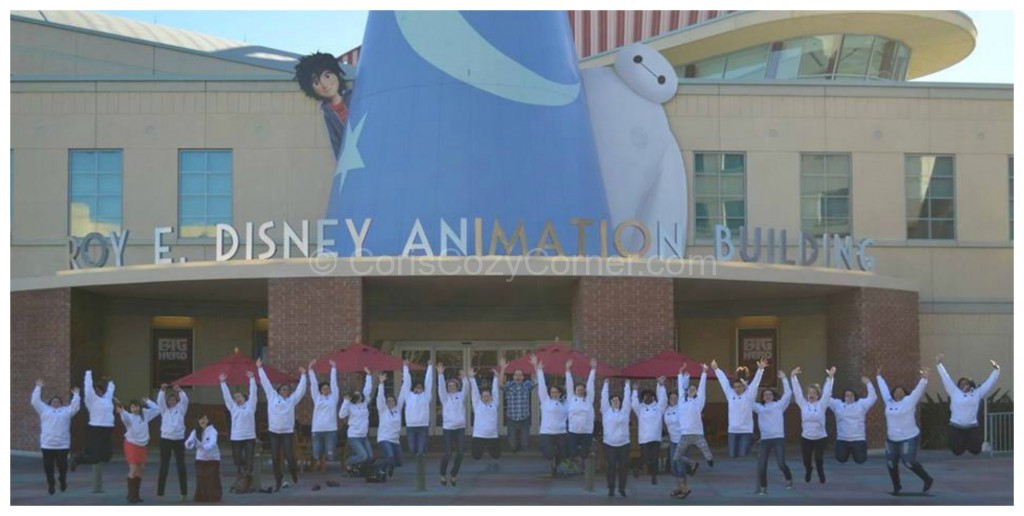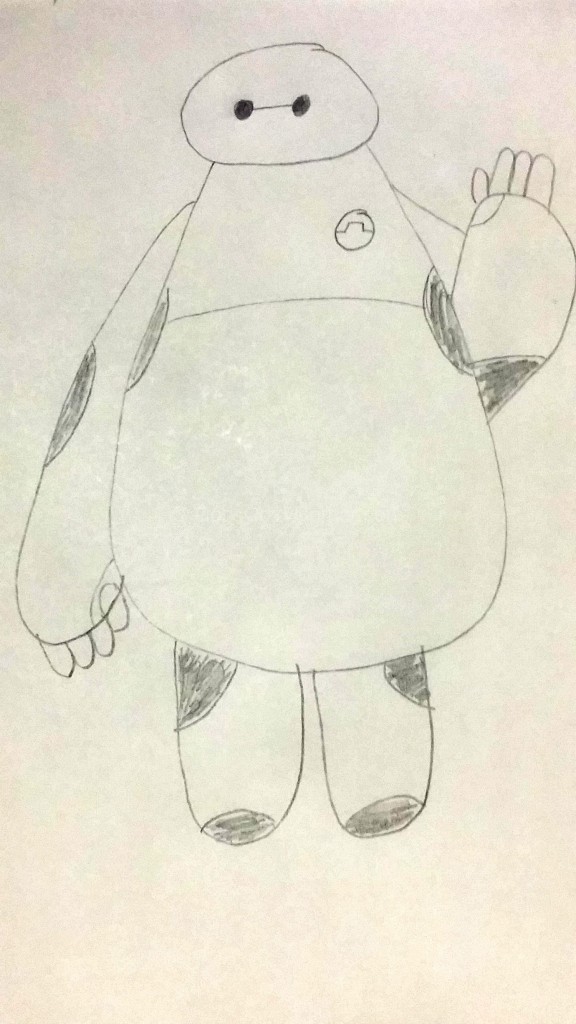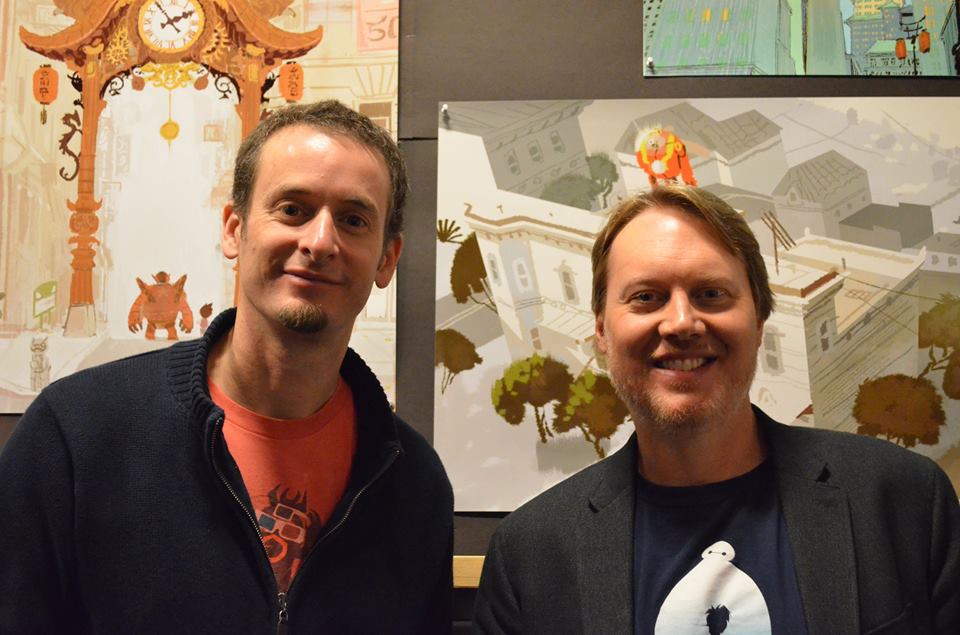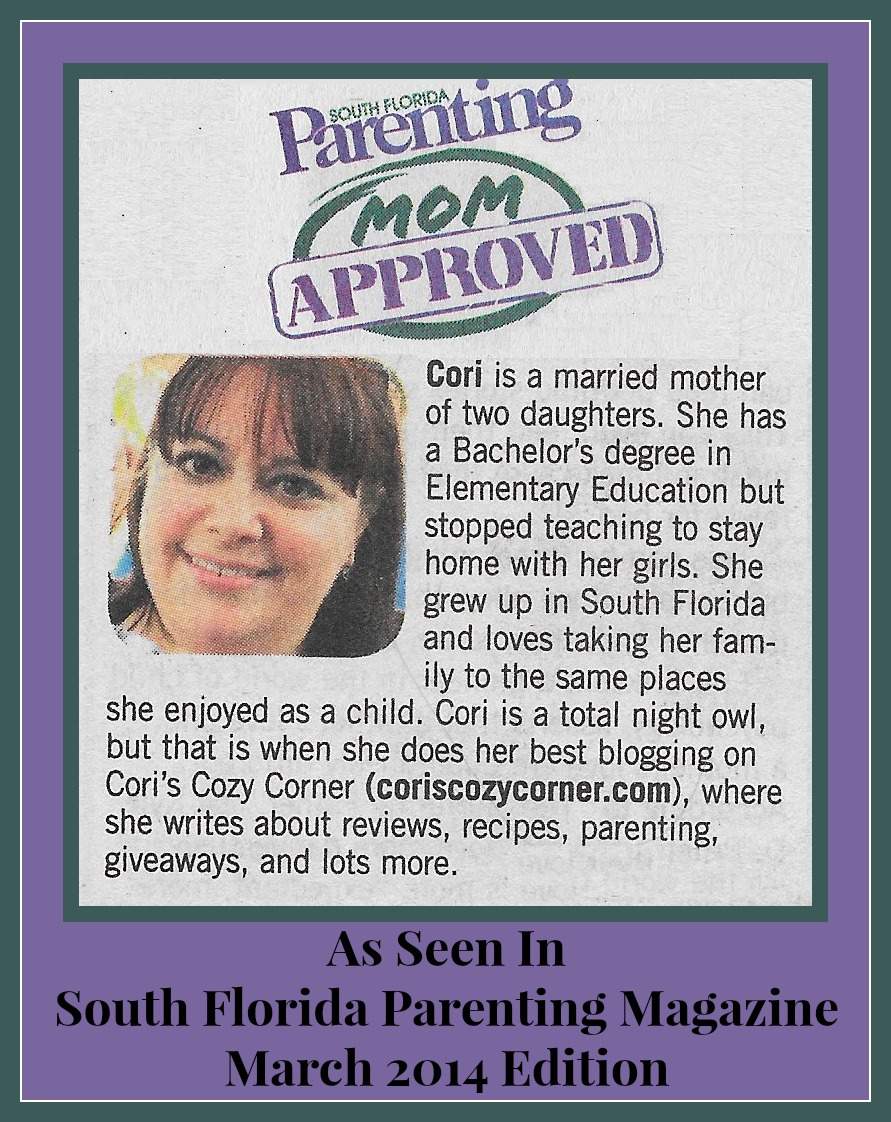Disclosure- I have been provided an all expense paid trip to Los Angeles for the Big Hero 6 movie premiere and ABC TV Event in exchange for coverage of these events. All opinions are 100% my own. Thank you so much Disney and ABC TV!

 During our press trip to Los Angles we had the opportunity to spend the day in the Disney Animation Studio and learn from the experts. We interviewed the directors of Big Hero 6 Don Hall and Chris Williams. We learned how to draw Baymax (and Hiro) from Disney Animator Jin Kim. Let me just say that Disney will not be asking me to draw anything for them any time soon. We also interviewed 2 of the actresses of Big Hero 6 and tried our hand at doing a voice over for a scene of Big Hero 6. Keep an eye out for those up coming posts.
During our press trip to Los Angles we had the opportunity to spend the day in the Disney Animation Studio and learn from the experts. We interviewed the directors of Big Hero 6 Don Hall and Chris Williams. We learned how to draw Baymax (and Hiro) from Disney Animator Jin Kim. Let me just say that Disney will not be asking me to draw anything for them any time soon. We also interviewed 2 of the actresses of Big Hero 6 and tried our hand at doing a voice over for a scene of Big Hero 6. Keep an eye out for those up coming posts.
Here’s my attempt at Baymax: There were no erasers on our pencils which was a little frustrating for this type-A girl but it was so much fun learning from an actual Disney animator who worked on Big Hero 6 and other movies. Here he is showing us how to draw Hiro.
There were no erasers on our pencils which was a little frustrating for this type-A girl but it was so much fun learning from an actual Disney animator who worked on Big Hero 6 and other movies. Here he is showing us how to draw Hiro.
 Stay tuned for an upcoming post of me trying my hand at doing a voice over of Baymax! Here are some pictures from our day at the Disney Animation Studio. I just love how they make the entire office area decorated like the movie they are working on.
Stay tuned for an upcoming post of me trying my hand at doing a voice over of Baymax! Here are some pictures from our day at the Disney Animation Studio. I just love how they make the entire office area decorated like the movie they are working on.

 Small group picture with Big Hero 6 Directors Don Hall and Chris Williams.
Small group picture with Big Hero 6 Directors Don Hall and Chris Williams.
Here’s our awesome and interesting interview with Big Hero 6 Directors Don Hall and Chris Williams. They were so interesting and funny that there really wasn’t anything I could cut out to make this shorter. Enjoy! Q : I have a question for Don. So, what attracted you to the story of Big Hero 6, being that it’s sort of a small publishing in the comic book world?
Q : I have a question for Don. So, what attracted you to the story of Big Hero 6, being that it’s sort of a small publishing in the comic book world?
DON : We never pitched one idea. We pitched a few, at least three. What originally attracted me to Big Hero 6 was just the title. It just sounded interesting. And then I researched it a little bit more. I saw the Japanese superhero theme, thought that was super cool, and then read the books and I was really struck by the characters. They were just so fun. They were fun and appealing characters. They had goofy names, like Honey Lemon. And you could tell that the creators loved Japanese pop culture and that’s why they did the book. They wanted to take their sort of love and anime and all things Japanese and infuse that with a sort of Marvel superhero story. I love that. Most of all we could see amidst all of that that there was an emotional story about a 14-year old super genius who loses his big brother. And his robot that becomes a surrogate big brother and heals him. So it had all of these elements, but even then it still was, to me, a dark horse, you know, that it would get picked by John (Lasseter). I mean, there were some other ones that were a little bit more popular, maybe, but he gravitated towards this one, as did the other directors when I pitched it to them. And I think it was that emotional hook that got everybody.
CHRIS: Yeah. I remember pretty vividly, about three, three and a half years ago. Don and I did a pitch in this room, on that wall, of Big Hero 6. It was real skeletal, like a broad-strokes summary of what it could be. At that stage, you’re not looking at every character, every scene. It doesn’t have to be worked out. You just have to show the potential for a fun story. And everyone was really taken with the idea of a kid who was going to lose his brother and who would be left with his brother’s robot, a surrogate big brother, to help him move on. That just struck a chord with everybody. And so it was my favorite. I was really glad when John Lasseter green-lit it, and in a way, the fact that it was an obscure property really helps us, because the way we make movies here is, we’ll sit at this table and talk about it for years. And it evolves quite a bit and we have screening after screening and the story changes a lot. So we know that whatever we start out with, it’s going to end up being something different. So the fact that it wasn’t a well-known property where people were going to have their own idea of what it should be really helped us. It did evolve a lot with the way we work around here. I met the men who created them.
DON : Duncan Rouleau and Steven Seagle (the creators of the Big Hero 6 comics) came to the premiere last night. They really loved the movie and I felt like if the creators of the original comic book love this movie, then hopefully I think we did something right by them. It was great.
 Q : What was the biggest change from the initial script to the final cut of the movie?
Q : What was the biggest change from the initial script to the final cut of the movie?
DON : Biggest change? One thing that just comes to mind is that Baymax became more central. We realized that when he is driving the story and driving the plot it really helps. And he became a real interesting character in uniting the sort of “boy and his robot” story and the superhero origin story.
CHRIS: Yeah. But I don’t know if it’s the biggest. I think it’s the most significant because to that point Hiro was really driving it. Which makes sense. You’d want the protagonist driving the story. But the story wasn’t coming together and it didn’t come together until we put Baymax front and center. Take the idea that he (Baymax) wants to heal him (Hiro) and put it in the forefront and make it really proactive, as opposed to being reactive. Before he was really reactive to Hiro and he just followed Hiro around. He was always a great character, but when you’d put him front and center and make him proactive, he’s the one engaging a lot. If you look at it, it’s a little sneaky, but he’s the one that’s really pushing the story forward. He’s the one that brings the friends in and he’s the one that furthers the flight because it’s making Hiro feel good and forget about the loss of his brother for a little bit. Once we did that, that’s when the story really started.
DON : I would say also the specific thing is the scene on the wind turbine after that first flight scene. That really kinetic scene where they’re flying through the city. The scene where it’s just the two of them sitting on the wind turbine above the clouds, that really sort of sweet scene, was a very late addition but that’s the way we worked. We keep sort of questioning our assumptions and keep challenging the story. And we realized there was something missing. And we added that scene and it really solidified the relationship and we understood then how much they were invested. How much they loved each other. We became invested in their relationship and that was a fairly late addition. I think a credit to the way that we make movies here, where we allow ourselves to constantly reassess and so I was really proud of that scene.
 Q : Did you study any specific Marvel action scenes from the movies to inspire any of the scenes from this movie?
Q : Did you study any specific Marvel action scenes from the movies to inspire any of the scenes from this movie?
CHRIS: I can’t say we did. I wouldn’t say we studied but we’d seen the movies so many times that we’re all just big geeks. So we probably knew them more than we should. We definitely wanted to do right by the action part of it, you know. But the emotional story is the most emotional thing, you know? But we also felt that there was going to be an expectation that the action scenes had to be pretty awesome. And, not only that, but they had to have a different personality. I guess that’s one of the things that I’m most proud of. That they all moved different. I loved the fact that they’re all very different. The car chase is kind of just fun and thrilling. The scene, we call it monster, but it’s the face-off where we reveal who Yokai is, that one is tragic. And then the battle at the end, it’s just all hands on deck. They all have a very different personality. The one in the warehouse, that was creepy but comedic. Baymax makes that one kind of fun, how he can’t move fast. So I love that they all have different personalities. That was very important, that they couldn’t just be one note.
 Q : I just want to ask who your favorite character is in the movie, and why?
Q : I just want to ask who your favorite character is in the movie, and why?
CHRIS: We should probably disqualify Baymax. That’s too easy. I guess for me, I identify a lot with Fred. He’s really a dork and a geek and all just into monster movies and sci-fi. I don’t have the collection that Fred does (or) the resources. I don’t have the resources at all. But definitely I can identify with Fred. There’s moments for Fred, during the superhero shenanigans part of it, I keep remembering the feeling that I had when I was a kid and we played superhero and I had the trash can lid for a Captain America shield. And we would throw that. There was a feeling and that’s how I feel like Fred approaches this whole thing. The direness and the stakes of it don’t really sink in. For him, it’s just, “I get to play superhero as an adult.”
CHRIS: You’re in a building full of Freds here.
DON : Yeah.
CHRIS: And, yeah, I definitely sort of connect with Fred. I guess I would aspire to be as cool and capable as Go Go and I like the way that she carries the team for a good stretch. She is really the only one who seems to be qualified, initially. And I think that maybe some of the silliness or goofiness of Honey Lemon is something that I connect with as well. So maybe any of those guys. Wasabi, that would be my kids’ favorite character.
DON : Damon really transformed that character. That character probably changed the most after we cast Damon. We kind of had an idea of what that character was going to be, but Damon comes in, and he has this really great comedic skill set that really guided us. He’s so great at playing characters that try to put up this façade that crumbles really quickly and he became a really important character for the team. He was the one who was the realist. He was the one who was able to point out that becoming a superhero was a sort of a crazy idea and seems a little dangerous. So for a while he’s actually the voice of the audience and very funny to boot.
 Q : I think the scenery is really exciting, mesmerizing, and there is so much to see in it. So, how did you go about researching what the actual backgrounds would be and how much attention you wanted to draw to it?
Q : I think the scenery is really exciting, mesmerizing, and there is so much to see in it. So, how did you go about researching what the actual backgrounds would be and how much attention you wanted to draw to it?
CHRIS: We put a stake in the ground very early on, saying we’re going to push the lighting. It a very cinematic look and that was by design. We really wanted to push that with this movie. So we had some rules that governed our art direction, which were, simple characters on a complex background. And so we knew that we’re gonna just pack everything (in). There is more detail in this movie than, I think, in the last three movies. That’s a credit to our production designer, Paul Felix. And our art director of environment, Scott Watanabe, who really shared the burden of how we gonna integrate all of this, the Japanese stuff, into San Francisco? And not only that, how are we going to make it seem like a lived-in, real place, not a soundstage or a kind of a CG-ish (computer generated-ish) kind of environment. They really shouldered the burden of that and getting them all correct. Even in Japan, we were there a week ago, for the world premiere, and we got compliments from the Japanese. They loved the emotion of the movie, and so much, they really embraced the movie. They kept saying this was one of the most authentic American portrayals of Japan, ever. And it’s not Japan. You know what I mean? And they fully acknowledge that. They’re like, “We get it, we get it, this is a fantasy world, but it’s more real and more indicative of Tokyo and Japan than any other movie they’d seen recently,” so that was pretty cool.
DON : Yeah. We’d love to take all of the credit for everything, but we have an incredible production designer, our art director. And they really go to these places, they immerse themselves, they sketch. They take pictures, they really study. And that’s how you get all of the details that add up so that it feels realized, so that it feels really complete. And these guys go really deep. Like, even the placement of the sun in the sky, the sun will always be in the right place in the sky, depending on the time of day in the scene. Depending on the geography of San Francisco. And just the moisture in the air. And things that I wouldn’t have thought about that most of these guys are consumed by. Getting all of these things right makes you feel like you’re in a complete, comprehensive (world).
 Q : There were so many things we could recognize. But how did you, instead of making something completely fantasy or completely real, how did you come up with the combination of these real places like that?
Q : There were so many things we could recognize. But how did you, instead of making something completely fantasy or completely real, how did you come up with the combination of these real places like that?
CHRIS: Well, it happened very early, because that’s the first thing we generally tackle. Before we ever go into story, it’s always the world. After we had a meeting with Marvel, where I said “John (Lasseter) picked Big Hero 6.” They (Marvel) said, “You know you don’t have to worry about setting this in the Marvel Universe. Don’t worry about trying to integrate Captain America and Iron Man and all of that kind of stuff. Just take this and go. Make your own world.” So that was very freeing and cool, but then it left a lot of questions. Like, okay, what is the world then? The Marvel Universe really takes place in the real world. It’s New York essentially. So I wanted to stay away from New York and I really wanted to stay away from LA. We knew it was going to have this Japanese — we were going to integrate a Japanese stamp on it. So, San Francisco just felt cool because it’s very recognizable. It’s a contained city. It’s a beautiful city. And there’s so many things that people recognize around the world, like the Golden Gate Bridge and cable cars and on and on. So it just felt like we could make a really grounded, relatable world but make it — but still have the fantasy that we do in animation in the caricature, that we do in animation. So, it was a pretty easy pitch, by the way. “Hey, John, we want San Francisco and Tokyo.” It’s like, his two favorite places in the world. So, yeah, that was a good pitch.
DON : Something that John emphasizes a lot, is that, over the course of the years of production, the story is going to change a lot, but you’re going to live with the world that you create. So before we created the story, we did a lot of research just to build the world. And let the world inform the story.
CHRIS: I just want to bring up one little minor detail. We knew that there was going to be no superpowers in the movie. That was another stake in the ground. Nobody is magic, nobody is irradiated by anything, any kind of ray, cosmic ray or gamma ray or spiders, or anything. So it’s going to be real people, and their superpower is going to be super technology. Both of those cities, Tokyo and San Francisco, are kind of hubs of technology. So that kind of felt like another kind of easy integration.
 Q : You wanted certain people to voice the characters, but did that happen with all of the characters, or just Baymax?
Q : You wanted certain people to voice the characters, but did that happen with all of the characters, or just Baymax?
CHRIS: To some degree. We had an idea. We had written versions of these characters. But, inevitably, especially when you get such amazing actors like Damon and TJ and Genesis and Jamie, they start to shift a little bit. They bring so much of themselves to it that it’s kind of a circular thing. Where you start with this, and they come in, and “oh, look what they’re doing,” and then we integrate that into the whole mix. We looked at it just like we always do. We have a great casting department and they bring us choices and auditions and all of that kind of stuff. And we just kept holding out until we found the right people.
DON : We wanted to get to know these characters really intimately, so that we would know how they would behave. Not just in the scenarios of the movie, but in any situation. And, until we’d cast, we could create a sketch, and get pretty close, but once you cast, then you can really crystallize and really get to know the character. That’s crucial stuff. We get usually about two or three screenings in before we have a pretty good sense of where the story is going, generally, before we cast.
 Q : I have a question about the technology. The technology in the film is not only futuristic, but it’s kind of ultra-modern. Is that based on anything? Did you guys work with a science team?
Q : I have a question about the technology. The technology in the film is not only futuristic, but it’s kind of ultra-modern. Is that based on anything? Did you guys work with a science team?
CHRIS: Yes, and yes. If you watch the credits, you’ll see, “Thank you, science.” So many people that we brought in, because we do all extensive research. There were scores of roboticists that consulted on the movie and that research trip, that gave us Baymax. Then there was a guy I met on that research trip, Dr. Tom Wagner, who was from iRobot. He became a kind of a consultant on the film early on. And we kind of ran not just the robot stuff, but technology through him, too, like plasma blades. We want Wasabi to have plasma blades. Can that happen? And he’s like, “Well, yes, if you do this, and you did that”. Some of it we’d use and some of it we pulled back just for design reasons. Everything in the movie is researched and grounded. We tried to keep it as real as possible. Even telekinesis, which we thought we were really bending the rules there. We come to find out that people are actually working on that.
DON : It’s a hard thing to do, to make a movie where you’re trying to deal with the latest cutting-edge technology. One of the challenges is, the actual stuff is moving so quickly, we have to make sure we get our movie out ahead of it. I think we managed it.
CHRIS: Like Siri. Three and a half years ago I went out on a robotics tour and that’s where I met Chris Atkinson, who was doing soft robotics and that led to Baymax. One of the things that they kept stressing is human-robot interaction (or human-A.I. interaction) is difficult because human speech patterns and the slang we use and all of that kind of stuff is a very difficult thing. Well three months later, Apple came out with a version of the iPhone app, Siri, that for all intents and purposes works really well. I can talk to Siri and she can understand me. So it just goes to show you how quickly these things are advancing. Micro-bots are right around the corner. [LAUGHTER]
 Q : Is there a message that you are trying to send about the emotional relationship between a boy and his robot, compared to nowadays it’s people and technology and their SmartPhone?
Q : Is there a message that you are trying to send about the emotional relationship between a boy and his robot, compared to nowadays it’s people and technology and their SmartPhone?
DON : We were thinking of Baymax more of a character than as a robot, ultimately, and his role in the emotional story. Primarily we were thinking of this as a story about loss and the idea that Baymax would be a surrogate big brother, helping Hiro with his loss of his brother. We kept going back to that Hiro would have a cathartic moment in the movie once he’d accepted the idea, or come to realize that, in a sense, his brother is isn’t really gone. When you lose somebody, they can live on through the choices that you make. And that really is the thing that we kept going back to- what is this movie ultimately saying? What is the main thematic idea? It is that. It’s the way they can live on through you. That was primarily what we were circling around as we were generating the emotional story.
CHRIS: I will say that early on as I was doing my research it became very apparent that Western and Eastern cultures view technology differently and this came to a head with Chris Atkinson, who was the soft roboticist that kind of showed me this. He just went on and on about how he frustrated he is as a roboticist that Western movies always portray the robots as villains. It’s technology run amok, right? “When is somebody is gonna put a robot up on screen that I’ve never seen before and when is that robot gonna be the hero of the movie?” And I was like, “Yeah, yeah, yeah, you had me at inflatable. But the Japanese robotocists, what got them to be roboticists were anime. It was always anime. And you could tell the ages of the roboticists by which robot he was into. Going all of the way back to Astro Boy or Gundam or Evangelion, or whatever. There’s an Eastern philosophy that technology will give us a brighter tomorrow. A lot of times in the West, it’s going to be our downfall. Ultimately has nothing to do with the technology. It’s about who wields that technology. But the theme of loss is really our main theme, but there was a lot of stuff that kinda went into the soup, I guess.
Q : If you could give Baymax any upgrade, what would it be?
DON : Hmm. An upgrade. Boy. It’s funny we’ve been getting a lot of people have recently who would love their own Baymax. And we’ve heard people say he’s such a great companion because he has no needs. He is always attentive to other people’s needs. I don’t know.
CHRIS: I’m thinking. He flies. I was thinking yeah, he flies, he’s got a rocket, he’s a caring nurturer. Yeah. What about you? What would you do to him?
Q : I think he should sing.
[LAUGHTER]
Q : It’s calming and soothing and music abilities, like, you press a button, and it’s like, elevator music coming out.
CHRIS: We needed you like, a year ago.
DON : Yeah, where were you? [LAUGHTER]
CHRIS: Now we have to. Now we have to do a sequel. [LAUGHTER]








Speak Your Mind